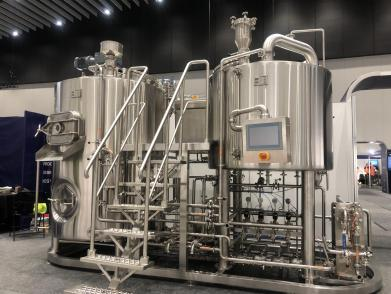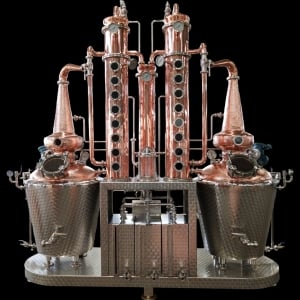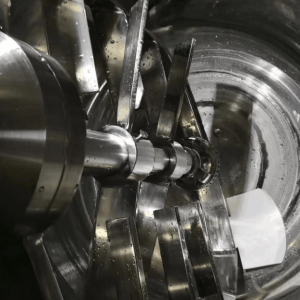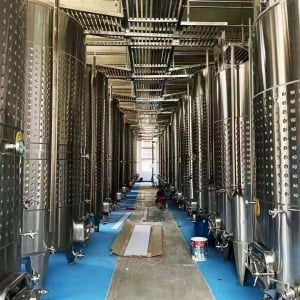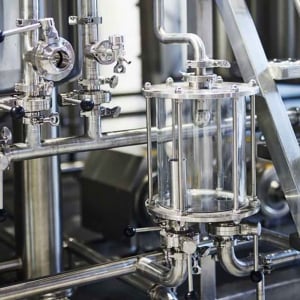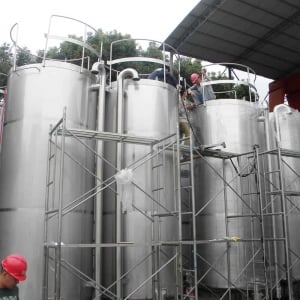Overview of Beer Production Equipment
Commercial beer production requires specialized equipment to brew and ferment beer on a large scale. The main pieces of equipment include:
Brewing Equipment: Mash tuns, lauter tuns, brew kettles, whirlpools
Fermentation Equipment: Fermenters, bright beer tanks
Filtration Equipment: Filters, centrifuges
Packaging Equipment: Bottlers, canners, keg fillers
Ancillary Equipment: Grain handling, cleaning and sanitation, quality control, etc.
The scale and automation of the equipment varies widely, from small manual systems to large computerized brewhouses. When selecting beer production equipment, brewers must consider factors like batch size, production volume, beer styles, quality needs, budget and more.
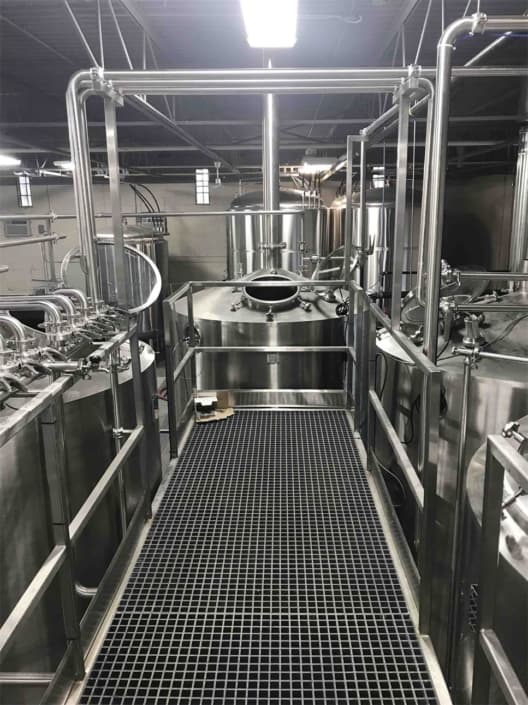
Main Types of Beer Production Equipment
| Equipment | Description |
|---|---|
| Mash Tun | Mixes grist with hot water to convert starches to fermentable sugars. Often stainless steel or copper. |
| Lauter Tun | Separates sweet wort from grains. |
| Brew Kettle | Boils wort with hops for flavor, bitterness. Usually copper or stainless steel. |
| Whirlpool | Settles out protein trub and hops. |
| Fermenter | Ferments sweet wort into beer. Typically stainless steel or plastic. |
| Bright Beer Tank | Conditions and clarifies beer after fermentation. |
| Filter | Removes particles and extends shelf life. Plate & frame or membrane filters. |
| Bottler | Fills beer into glass bottles, adds crowns. Inline or rotary fillers. |
| Canner | Fills beer into cans, lids cans. Often high-speed rotary fillers. |
| Keg Filler | Fills kegs with beer, may include counterpressure fill heads. |
Beer Production Process
The standard commercial beer production process with main equipment is:
- Milling – Cereal grains are milled into grist to expose starch granules
- Mashing – Grist is mixed with hot water in mash tun to convert starches to fermentable sugars
- Lautering – Sugary wort is separated from grains using a lauter tun
- Boiling – Wort is boiled with hops in the brew kettle for sterilization and flavoring
- Whirlpool – Coagulated proteins and hops are settled out in a whirlpool
- Cooling – Hot wort is rapidly cooled to fermentation temperature
- Fermentation – Yeast ferments sugars into alcohol and CO2 in fermenters
- Maturation – Green beer is conditioned and clarified in bright beer tanks
- Filtration – Particles are removed to stabilize and extend shelf life
- Carbonation & Packaging – Beer is carbonated and packaged into bottles, cans, kegs
The equipment must be designed to maintain sanitation, avoid oxygen pickup, minimize losses, and ensure consistent product quality at all stages. Automation and computer control are often used to track batches, monitor process parameters, ensure quality control and optimize production.
Beer Brewing Equipment Details
Table 2: Equipment Capacity, Design and Customization
| Parameter | Details |
|---|---|
| Batch Size | From 1 bbl microbrewery systems to 5,000 bbl mega breweries |
| Production Volume | From small craft breweries to global brewers brewing over 10 million bbl/year |
| Construction Material | Stainless steel, copper, plastic (HDPE, PET), plycarbonate, fiberglass |
| Automation Level | From manual to semi- to fully-automated |
| Customization | Equipment can be customized for different batch sizes, beer types and quality needs |
| Design | Units available range from standalone tanks, vessels with modular configurations, to turnkey systems |
| Layout | From small compact systems to palletized modular builds to custom engineered plants |
Table 3: Beer Production Equipment Suppliers and Price Ranges
| Supplier | Price Range |
|---|---|
| Major OEMs | $500K to $5 Million+ for full turnkey brewhouses |
| Tank fabricators | $5,000 – $500,000 per vessel |
| Import equipment | Varies, often lower prices from China |
| Used equipment | 20-50% less than new |
Table 4: Equipment Installation, Operation and Maintenance
| Stage | Activities |
|---|---|
| Installation | Delivered equipment is positioned, assembled, utilities connected, wiring, piping, programming done |
| Operation | Trained brewers handle batches, monitor processes, ensure SOPs followed per beer recipes |
| Maintenance | Daily/weekly cleaning and sanitizing procedures done; preventative maintenance as per schedules |
How to Select a Reliable Beer Equipment Supplier
Table 5: Supplier Selection Criteria
| Consideration | Details |
|---|---|
| Reputation and Experience | Years in business; client references and testimonials |
| Quality and Compliance | Construction to food/beverage grade standards; safety certification |
| Offerings Suitability | Equipment meets needs for production scale, batch size, automation level |
| Service Capability | Installation, operator training, maintenance and repair services offered |
| Lead Time and Shipping | Equipment ordering to delivery timelines |
| Pricing and Payment Terms | Competitive pricing with reasonable payment schedules |
| Warranties | Workmanship, parts defects, production output warranties |
Pros and Cons of Types of Beer Brewing Equipment
Table 6: Comparison Between Brewing Equipment
| Equipment | Pros | Cons |
|---|---|---|
| Vertical tanks | Compact footprintEasier cleaning | Height constraints in some facilitiesTemperature stratification issues |
| Horizontal tanks | Even temperature distributionEasier dry hopping/fruit additions | Larger footprintAccess hatches limit internal space |
| Stainless steel | Durable materialEasy to clean/sanitize | High equipment costDifficult fabrication |
| Plastic tanks | Lower equipment costLightweight for shipping | Scratches over timeReduced durability |
| Manual operation | Lower capital costMore hands-on control | Labor intensiveInconsistent process control |
| Automatic control | Consistent beer qualityReduced labor | Additional costComplex programming |
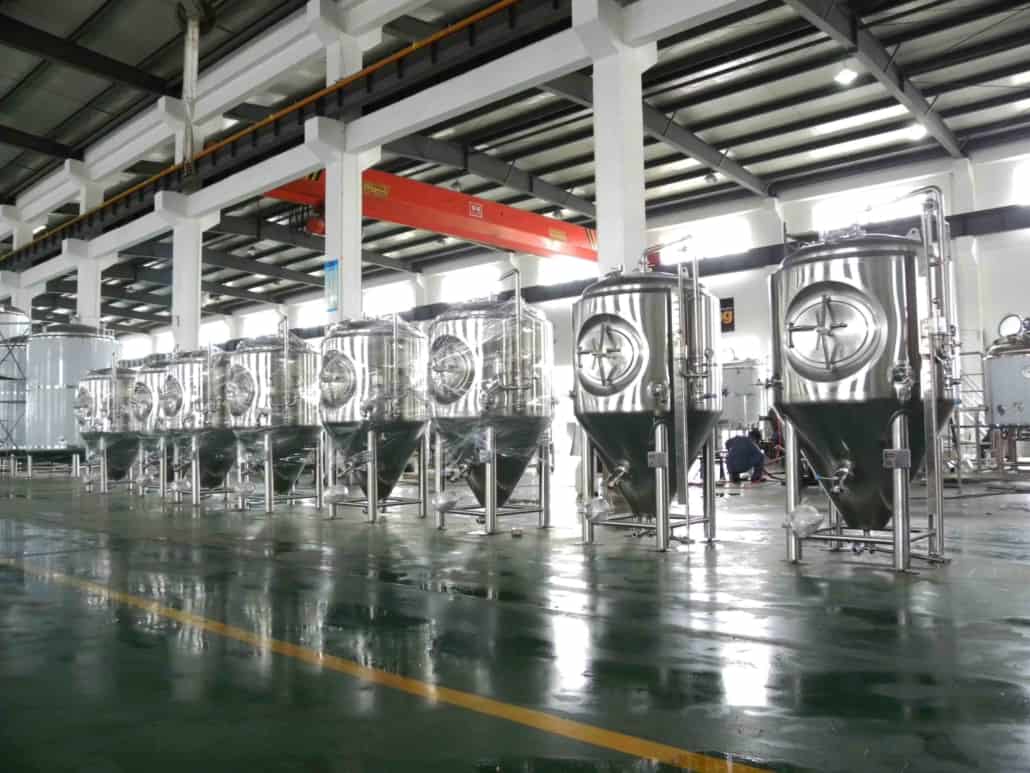
FAQ
What are the most critical equipment in beer making?
The mash tun, brew kettle, and fermenters have the biggest impact on overall beer quality and consistency. The heat transfer systems, filtration, and packaging equipment are also critical.
What is better: Buying new or used equipment?
Used equipment can save substantially on costs, but may carry higher maintenance and have shorter remaining lifespans. Newer gear often incorporates improved hygienic design standards and automation.
How easy is it to expand an existing brewhouse system?
It depends on the original design – modular systems with integrated controls using a master panel make incremental expansions much simpler than hard-piped custom builds.
Is plastic or stainless preferred for fermenters and aging tanks?
Both have advantages – stainless is more durable long-term but requires gentler cleaning regimes. Many brewers use stainless for fermentation and less expensive plastic for dry hopping/fruit aging tanks.
Should I work with a brewery engineering firm or source equipment myself?
Brewery engineering firms provide end-to-end project management, vendor consolidation and often the best pricing on full brewhouse packages. But sourcing tanks yourself allows more customization flexibility.

